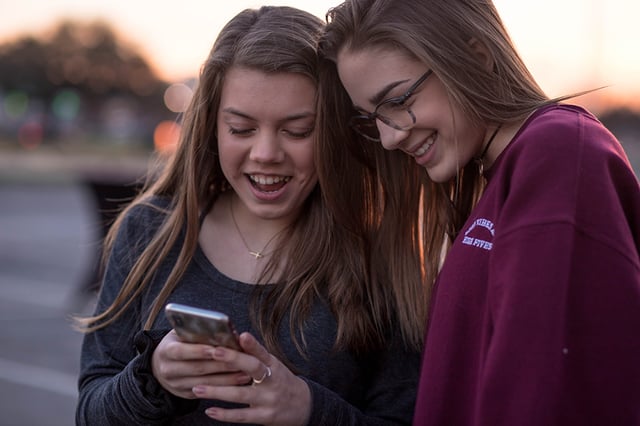This PD Makerspace Gives Teachers Hands-On Practice Using Tech
 Insights By Faith Plunkett
Insights By Faith Plunkett
New approaches to teaching are taking hold, prompted by advances in learning science, teacher innovation, and an evolving understand of the future of work.
These budding approaches include learning that is active and hands on; learning that is personalized and student led; and learning that is project based and inquiry driven. Then, there are also trends like flexible seating, technology integration, and flipped classrooms as well as new content like STEM (plus its various iterations) and computer science.
Beckoning in an entirely new era of pedagogy and making these seismic shifts take hold at schools and across districts is a monumental task. The most important ingredient in this effort is the teachers.
Without teacher buy-in and teachers having the necessary practice, support, and resources, this effort quickly becomes disparate, ineffective, and inequitable. And without the opportunity to learn in environments that model the sort of learning experiences intended for students, adequate changes in teaching style won’t occur.
“Teachers are kind of competitive.” Using teacher enthusiasm to your strength
Enter Faith Plunkett, an instructional coach across multiple campuses at Decatur City Schools. Faith helps teachers integrate technology into their classrooms to unlock opportunities that enhance instruction.
As Faith stepped into the role of instructional technology coach, the district was undergoing a digital transformation by rolling out a 1:1 initiative and a computer science program (the latter of which was mandated in Alabama’s new digital literacy standards). The district also received a $75,000 STEM grant for digital tools.
In response to these changes happening at the district, the need arose to bridge the perceived disconnect between computer science and more traditional content areas, equip teachers with the practice and resources to deepen technology integration, and offer strategies to use digital tools as a launchpad for student creativity and imagination.
To guide these initiatives and programs, Faith built a professional development space for teachers that resembles her former makerspace classroom.
Called the Spark Lab, she designed the space based on her extensive experience integrating technology into the classroom in maker-based environments. By reflecting a student learning environment, Faith is changing the way teachers are learning so that they too can change the way their students learn.
Walk into the Spark Lab and you’ll find funky lighting and bright purple walls boasting large lettering with the messages, ‘Code,’ ‘Make,’ and ‘Create.’ To make the lab as inviting and comfortable a space as possible, there is also a sofa and – my personal favorite – a Keurig.

The layout enables a flexible seating approach with different making stations featuring both craft materials and creative technology. In short, the lab is a makerspace for teachers.

The results are promising. Faith explains:
“It's really funny because teachers are kind of competitive, and they'll talk. If I go in one classroom, the teacher will go grab the teacher next door so she can see it. And then the teacher next door will ask, 'when can you come to my classroom and do this?'
Then, it starts to spread. I'll be walking down the hallway and see teachers teaching other teachers how to use everything I taught them, when they don't even know I'm going to be in the building.”
“Relationships do matter.” Enhancing professional development
Building the Spark Lab in her first year at a new district, Faith had to quickly gain the trust of her colleagues, so they could embrace the changes in how they learn to teach and feel secure when innovating and venturing into the unknown.
And beyond supporting the staff at Decatur City Schools, Faith also coaches teachers nationally through ISTE and the iSchool initiative. Building trust in this experience is also vital. When I asked her what the greatest lesson that she’s learned working in these capacities, her answer was simple, “Relationships do matter.”
Computer science and technology integration are vital not just for career readiness but for critical thinking, creative problem solving, and persistence and entrepreneurial skills. To integrate these, it is essential to build the relationships that elevate teacher professional development and empower them to return to their classrooms with practical strategies, the confidence to try, and an eye on innovation.
“I always want to be a continuous learner.” Finding daily opportunities to grow
To go deeper into this idea of building relationships with teachers to enable their work, there is an important message in how Faith grew her own knowledge of technology integration, interdisciplinary connections in computer science, and maker-based learning.
Before joining Decatur City schools, Faith spent several years teaching in a neighboring district, where she worked in the Entertainment Technology Academy. In this makerspace, she blended digital and traditional, hands-on projects. To both showcase the amazing work her students were doing and seek inspiration for other ways to engage her students and extend their learning, Faith took to Twitter.
“Twitter was so inspiring because I was able to connect with people who were teaching the same thing as me. I was able to gather ideas. I was able to share my ideas and get feedback, probably more feedback than I got from my principal.
It was a community that I built, and I've been able to connect with so many people from across the world and see what they are doing. The ability to learn on the go and have a free platform to connect with other people has been awesome; I'm standing in the checkout line, and I can pull up Twitter and find an article to discover a new idea while I'm standing and waiting. And it's so me. I love learning, and I always want to be a continuous learner.
I'm in a program for technology coaches through our State Department called the Alabama Leaders of Education Technology. It’s been kind of like a mentorship program. We've had several different Twitter chats with technology coaches from across the state, and it’s great to see what other people in my position are doing and how they respond to different questions.”
In a lot of ways, this experience is indicative of what students experience now and will experience in their future. The most powerful level of technology integration is redefinition, and here are teachers redefining professional development with social media by using it to dissipate borders and break down the walls of traditional classrooms.
And in an era of evolving practices in education – both big and small – this really shows that teachers are the best resources for other teachers.
“Sometimes being really innovative is hard because you're surrounded by people who aren't as innovative as you or don't think in the same way. It can feel kind of isolating sometimes on a day-to-day basis, but having a community of people around you that have the same open mindset and views is really awesome so you don't feel quite so isolated.”
Faith brings this experience of teacher-led professional development into the Spark lab with opportunities for self-guided learning and collaborative planning through technology.
Pedagogical change is a shared experience that benefits from collective learning opportunities for teachers. Delivering PD in the same way teachers are expected to teach and facilitate learning creates relevance and understanding through hands-on practice. Teachers are creative and aspiring; this gives them the opportunity to wield it.




